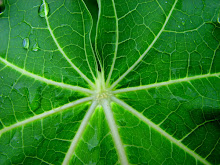 Recipe...straight from the King Arthur Flour sack.
Recipe...straight from the King Arthur Flour sack.I'm still trying basic bread recipes before I begin experimenting further with grains with which I'm less familiar...milo, millet, teff, rice flour, ground garbanzo beans, clover flour, etc...
I wasn't going to use this whole wheat flour to make whole wheat bread, originally. It was bought with the intention of easing some whole wheat into those all-purpose flour recipes, a little at a time, to play with consistencies. My past trials with making whole-wheat bread rendered magnificent little masterpieces of bread-shaped doorstops so compacted and heavy they could be used in self-defense as instruments of blunt trauma. I had no wish to repeat those experiences...
Then I happened to read the blurb printed on the top of the flour sack, which goes something like this:
I just finished making my second loaf of 100% whole wheat bread from your recipe on the package. This is the best whole wheat bread I have ever tasted, and you are right when you say whole wheat doesn't have to be dry and tasteless. You are going to make me famous!
J.E. Newport Beach, CA
Well, who doesn't love a testimonial? Who can resist the promise that this recipe will produce real bread rather than wheat bricks? I examined the recipe printed on the back, and the ingredients were blessedly straightforward...the only ingredient I usually don't use was the dry powdered non-fat milk. But in a strange alignment of Breadmaking Fate circumstances, my Be Prepared hubby just happened to have a nondescript stash of powdered milk packets...and all the other ingredients were one I had.
The challenge was on!...
Here's the recipe, and if I can make this, anyone can. It yielded a fine-grained, moist loaf that was so irresistably fragrant fresh out of the oven that I couldn't wait till it cooled to slice into it...and slather a slice with butter...mmmm!!
Classic 100% Whole Wheat Bread (from King Arthur Flour package)
2 1/2 teaspoons instant yeast OR 1 packet active dry yeast, dissolved in 2 tablespoons water
1 1/3 cups lukewarm water
1/4 cup vegetable oil
1/4 cup honey, molasses, or maple syrup (I used honey)
3 1/2 cups whole wheat flour (the King Arthur I used is hard red wheat flour)
1/4 cups nonfat dried milk
1 1/4 teaspoons salt
Mixing: In a large bowl, combine all the ingredients and stir till the dough starts to leave the sides of the bowl. Transfer the dough to a ligtly greased surface, oil your hands, and knead it for 6 to 8 minutes, or until it begins to become smooth and supple (You may also knead this dough in an electric mixer or food processor, or in a bread machine programmed for "dough" or "manual.") Transfer the dough to a lightly greased bowl, cover the bowl, and allow the dough to rise till puffy though not necessarily doubled in bulk, about 60 minutes, depending on the warmth of your kitchen. (note from me: I had to add a tad more flour, and did all the kneading by hand. The second time I made this, I tried sticking to adding the least flour possible beyond the measurements already given, and did my kneading right in the big bowl I mixed everything in. There was less chance of it sticking to the countertop, as the dough is slightly sticky.)
Shaping: Transfer the dough to a lightly oiled work surface, and shape it into an 8-inch log. Place the log in a lightly greased 8 1/2 x 4 1/2 inch loaf pan. Cover the pan loosely with lightly greased plastic wrap, and allow the bread to rise for about 30 to 60 minutes, or until it's crowned about 1 inch above the edge of the pan. A finger pressed into the dough should leave a mark that rebounds slowly. (note from me: after shaping the loaf and putting it into the greased pan, I took scissors and snipped three small slashes across the top to allow for expansion during the final rise. Instead of using plastic wrap, I rubbed a little oil over the top of the loaf and then put a couple of clean lint-free dish towels to cover it for the rise.)
Baking: Bake the bread in a preheated 350 degree F oven for about 40 minutes, tenting it lightly with aluminum foil after 20 minutes. Test it for doneness by removing it from the pan and thumping it on the bottom (it should sound hollow), or measuring its interior temperature with an instant-read thermometer (should register 190 F at center of loaf.) Remove the bread from the oven, turn it out of the pan, and cool it on a rack before slicing. Store the bread in a plastic bag at room temperature after fully cooled. Yield: 1 loaf
(note from me: I tested it for doneness with the Thump test. It cooked in exactly the 40 minutes stated in the recipe. Whether it was done then or not, the final doneness test was performed by slicing the end of the loaf off and slathering it with real butter. Cooling it on a rack?? It was only cooled long enough to withstand all the slicing action needed to give rations to my ravenous family...yep, it was goooood!)

I was so happy this turned out well, and I immediately stirred up another loaf. The ingredients and quantities are so manageable it's not a big project to accomplish...it's just about a mix, with just a tad of kneading thrown in, and no real know-how necessary. If you want a hearty, fine-crumb whole wheat loaf that's not dry and clunky, this is a good recipe...especially as a vehicle for sandwiches, or melting butter and raw honey!


2 comments:
No bread hints (I'm bad at bread) but wanted you to check out this post http://justwanderingthrough.blogspot.com/2008/09/grammas-cookbook.html
It made me think of this site. :)
I cannot wait to try this!
Post a Comment